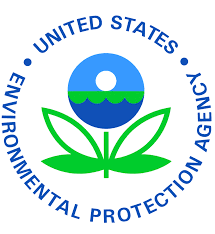Chemycal has been acquired by 3E
Learn MoreChemycal has been acquired by 3E
Learn MoreDiscover how Chemycal PRO helps you boosting your regulatory monitoring:

WASHINGTON (December 21, 2020) — Today, the U.S. Environmental Protection Agency (EPA) announced a new action to better protect American children from the dangers of lead. This final rule will lower the clearance levels for the amount of lead that can remain in dust on floors and window sills after lead removal activities, known as abatement. These new clearance levels will reduce lead dust-related risks to children in pre-1978 homes and childcare facilities where lead abatement activities take place. After actions are taken to remove lead from a building, those buildings must then be tested to make sure that the cleaning activities were successful. These “clearance levels” indicate that lead dust was effectively removed at the end of the abatement work. EPA’s new clearance levels are 10 micrograms (µg) of lead in dust per square foot (ft2) for floor dust and 100 µg/ft2 for window sill dust, significantly lower than the previous levels of 40 µg/ft2 for floor dust and 250 µg/ft2 for window sill dust.
“For too long, many children, especially those in low-income communities, have been exposed to unacceptable levels of lead,” said EPA Administrator Andrew Wheeler. “This overdue regulation is yet another example of the Trump Administration’s commitment to reduce sources of lead exposure and to provide a healthier environment for our children.”
“Through my experience working as a pediatric neurosurgeon, I’ve seen firsthand the devastating impact lead exposure can have upon the health of children,” said HUD Secretary Ben Carson. “I applaud the EPA on their work to ensure healthy homes for all children and appreciate their partnership with HUD as we work together toward this common goal.”
Lead-contaminated dust, from chipped or peeling lead-based paint is one of the most common causes of elevated blood lead levels in children. Lead dust can be generated when lead-based paint deteriorates or is disturbed. Lead exposure, particularly at higher doses, can pose a significant health and safety threat to children and can cause irreversible and life-long health effects.
Since the 1970s, the United States has made significant progress in lowering children's blood lead levels. No safe level of lead exposure has been identified for children, making them particularly vulnerable and further underscoring the importance that doing anything to reduce exposures can improve life outcomes. In 2001, EPA set hazard standards for determining when lead in dust presents a human health hazard and set clearance levels for lead in dust for floors and window sills in housing and childcare facilities. In 2019, EPA updated the hazard levels, making a monumental step forward in children’s health protection. Together, EPA’s 2019 hazard standards and 2020 clearance levels reflect the best available science on potential human health effects that result from exposure to lead.
CONTINUE READING ON www.epa.gov
2013 © MyChemicalMonitoring. ALL Rights Reserved. About Us | Terms and Conditions